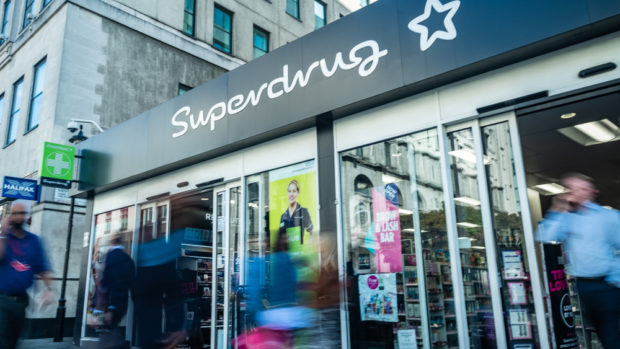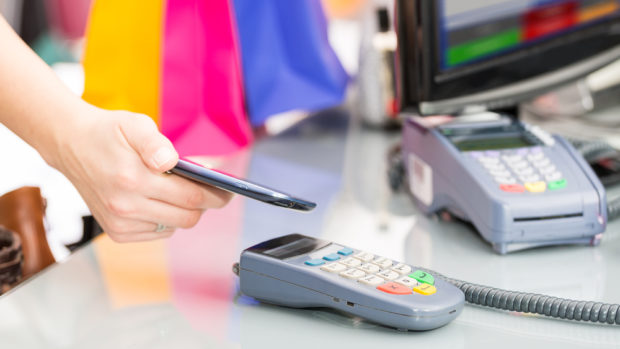
Retail sales volumes fell by 0.2 per cent in September 2021, following an upwardly-revised 0.6 per cent fall in August; despite the fall in September, volumes were 4.2 per cent higher than their pre-coronavirus (COVID-19) pandemic February 2020 levels.
Non-food stores reported a fall of 1.4 per cent in sales volumes in September 2021, because of falls in household goods stores (negative 9.3 per cent), such as furniture and lighting stores, and other non-food stores (negative 1.7 per cent) such as sports equipment stores.
Automotive fuel sales volumes rose by 2.9 per cent in September 2021 as demand towards the end of September increased sales; volumes were 1.8 per cent above their pre-pandemic February 2020 levels. Food store sales volumes rose by 0.6 per cent in September 2021 and were 3.9 per cent above pre-coronavirus pandemic levels in February 2020.
Despite relaxation of COVID-19 restrictions in summer 2021, in-store retail sales remain subdued; the proportion of retail sales online rose to 28.1% in September 2021 from 27.9 per cent in August, substantially higher than the 19.7 per cent in February 2020 before the pandemic.
Retail sales volumes have fallen each month since April 2021 when non-essential retailing re-opened and retail sales reached levels substantially above those before the pandemic. This is the longest period of consecutive monthly falls in the history of this series (which began in February 1996). However, sales remain 4.2 per cent above the level seen before the pandemic (February 2020).
0.2 per cent fall over the month of September in the volume of sales (quantity bought). Non-food stores were the largest contributor towards the monthly decrease at 0.5 percentage points. Within this, household goods stores, such as furniture and lighting stores were the main contributor which fell by 9.3 per cent over the month.
However, there was a positive contribution from food stores at 0.2 percentage points. Over the month, food store sales volumes rose by 0.6 per cent following a fall of 1.4 per cent in the previous month.
Fuel stores also reported a positive contribution of 0.2 percentage points as sales volumes increased by 2.9 per cent over the month following increased demand at the end of September.
Aligned with the fall in month-on-month sales, retail sales volumes over the last three months fell by 3.9 per cent when compared to the previous three months, partly because of strong sales in April when non-essential retailing re-opened. This is the first fall in the three-month-on-three-month series since March 2021. Compared to the same period a year earlier, sales volumes over the last three months fell by 1.3 per cent, its lowest rate since February 2021. However, percentage change over the past year should be interpreted with caution given the impact of base effects on growth rates because of the economic impact of the coronavirus pandemic throughout 2020. When compared to the same period two years ago, sales volumes over the last three months rose by 2.9 per cent.
Retail sales values, unadjusted for price changes, fell by 0.2 per cent in September 2021, following a 0.1 per cent decline in August. Over the last three months to September 2021, the value of sales was up 3.2 per cent on the same period a year earlier, reflecting an annual retail sales implied price deflator of 3.4 per cent.
Automotive fuel sales volumes increased by 2.9 per cent over the month to September and were 1.8 per cent above their February 2020 levels. In feedback from retailers, while many noted increased turnover during the last week of September resulting in increased sales over the month, other fuel retailers confirmed issues with deliveries and shortages at sites which had a downward impact on the value of their fuel sold over the month.
Increased fuel sales volumes in the last week of September is also reflected in data on UK spending on debit and credit cards, based on CHAPS payments made by credit and debit card payment processors, which reported a pickup in its “work related” spending category (such as fuel) from 24 September.
Non-food stores as a whole saw monthly sales volumes fall by 1.4 per cent in September 2021 and were 1.7 per cent below their pre-coronavirus pandemic levels in February 2020.
Household goods stores sales volume reported a monthly decline of 9.3 per cent largely due to a fall of 14.8 per cent in furniture and lighting stores. Sales volume for household goods stores have fallen each month since their peak in May 2021, following the re-opening of non-essential retailing in April, and were 1.0 per cent below their levels in February 2020.
Other non-food stores (such as chemists, toy stores and sports equipment stores) reported a monthly fall in sales volumes of 1.7 per cent in September 2021. Sales volumes were 3.7 per cent lower than this time last year but 3.4 per cent above their pre-COVID-19 levels.
Clothing and department stores reported an increase in monthly sales volume of 4.3 per cent and 0.2 per cent respectively. Sales volumes were 5.5 per cent and 5.1 per cent below their pre-pandemic February levels.
Online spending values increased in September 2021 by 0.5 per cent when compared with August 2021, largely because of an increase in department stores sales values (3.8 per cent). The monthly increase in online spending values resulted in a slight increase in the proportion of online sales, which increased to 28.1 per cent in September 2021, from 27.9 per cent in August.
This remains far higher than the proportion of online retail spending in February 2020, before the coronavirus (COVID-19) pandemic, of 19.7 per cent, although it is below the peak pandemic level of 36.6 per cent reached in February 2021.
Commenting on the September ONS Retail sales data which showed a slight decrease in retail sales volumes of 0.2 per cent last month, Jacqui Baker, partner and head of retail at RSM UK, said: ‘Retailers have been contending with a lot of competing factors on consumer spend in September, with more employees heading back to the office; the increasing appetite for eating and drinking out; more holidays to find some late summer sunshine; and not to mention soaring energy prices.
‘The fuel crisis in September drove a surge of 2.9 per cent month on month in spending on petrol. But this was more than offset by a switch from consumers buying household goods, which saw a dramatic 9.3 per cent drop in volumes, to spending more on social events or travel. In addition, the impact of fuel shortages contributed to depressed footfall as consumers stayed at home to conserve fuel.
‘The fall in consumer confidence in October, from -13 to -17, showed that households are becoming more wary about the economic outlook. However, as cars sit on the drive with full fuel tanks, consumers may have more to spend in October. This could drive a retail spending spree, particularly as consumers start to bring Christmas purchases forward to take advantage of early ‘Black Friday’ bargains and to ensure supply chain issues don’t dampen their Christmas plans.’
Thomas Pugh, economist at RSM UK, added: ‘The small fall in total retail sales volumes in September will be a slight drag on consumer spending and GDP at the end of Q3. And sales would have fallen by more if it weren’t for the jump in spending on fuel, which will unwind in October. This weakness probably partly reflects consumers spending more on services. But other measures of consumer spending also weakened last month. Seasonally adjusted new car registrations dropped by 93 per cent month-on-month and restaurant bookings dropped by ten percentage points compared to August. Indeed, food sales rose for the first time since June. This suggests that GDP growth probably slowed in September. We have pencilled in 0.3 per cent m/m after a 0.5 per cent m/m rise in August.
‘A combination of rising utility prices and higher taxes will mean that households’ real disposable incomes will fall over the rest of 2021 and will barely grow at all in 2022. Admittedly, households have accumulated over £200bn in savings, which they will probably use to offset the hit to their incomes from higher prices. But consumer spending growth will be slower over the next year, meaning that spending may not get back to its pre-crisis level until Q2 2022.’








Share